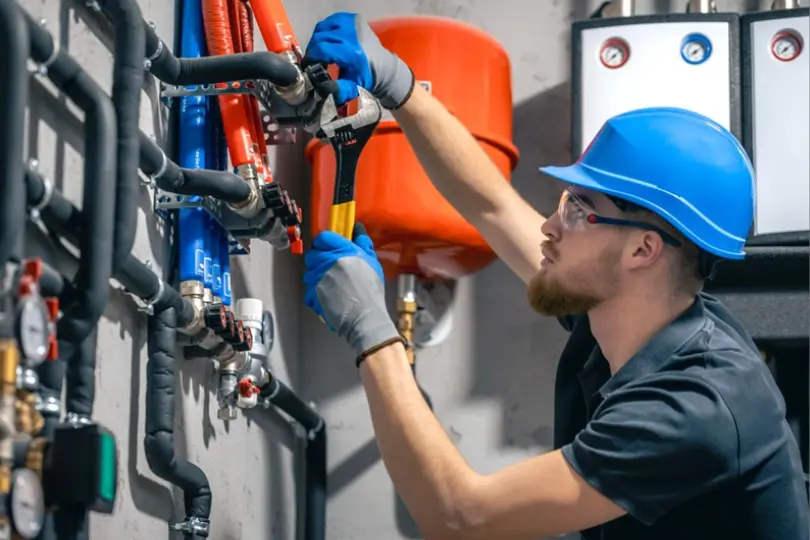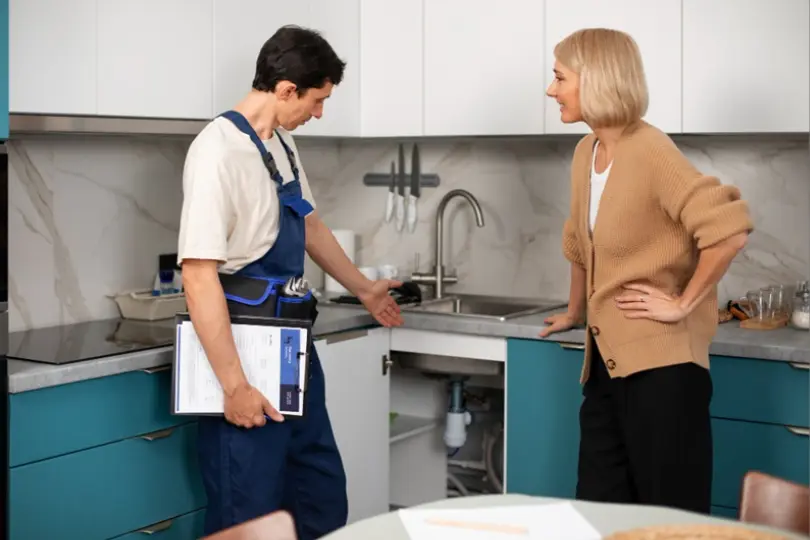
Keeping your pipes in great shape throughout the year isn’t just about fixing problems as they arise; it’s about staying one step ahead. Smart homeowners know that setting up a monthly inspection routine can catch small issues before they become major headaches. Take a careful look at visible pipes, especially in those often-forgotten spaces like basements, crawl spaces, and cabinets under sinks. You’ll want to watch for any red flags like corrosion spots, tiny leaks, or unusual dampness, with special attention to where pipes connect, since that’s where trouble often starts brewing.
1. Regular Pipe Inspection and Maintenance Routines
Don’t just use your eyes; your ears can be just as helpful in spotting potential problems. Strange sounds like gurgling, banging, or knocking in your pipes shouldn’t be ignored, as they’re often early warning signs of developing issues. It’s also smart to keep tabs on your water pressure levels, as sudden changes can signal trouble ahead. Having a detailed maintenance log might seem like overkill, but it’s incredibly valuable for tracking your plumbing system’s health and anticipating when components might need attention.
Here’s what to do:
- Inspect visible pipes in basements, crawl spaces, and under sinks.
- Look for corrosion spots, small leaks, and dampness near joints or connections.
- Listen for gurgling, banging, or knocking sounds — they can signal early issues.
- Monitor your water pressure regularly; sudden changes may indicate leaks or blockages.
- Keep a detailed plumbing maintenance log to track inspections and repairs.
2. Prevent Frozen Pipes with Cold Weather Protection
When winter rolls around, your plumbing system faces some of its toughest challenges. That’s why taking preventive steps becomes crucial during the colder months. Start by adding insulation to any exposed pipes, particularly those in unheated spaces like garages or along exterior walls. If you’re worried about winter thaws causing flooding issues, make sure you schedule sump pump repair professionals to make sure your equipment is up to date. This can save your basement from the headache of water damage. Adding foam pipe insulation sleeves is a cost-effective DIY project that can make a big difference, while letting faucets drip slightly during freezing weather helps prevent pressure buildup.

For extra protection during those bone-chilling cold snaps, consider adding heat tape or heating cables to particularly vulnerable pipes. Don’t forget to check for and seal any gaps where pipes enter your home through walls or the foundation; these tiny openings can let in enough cold air to freeze pipes. Even when you’re away, keeping your home’s temperature steady helps prevent stress on your plumbing system from temperature fluctuations.
Follow these steps for cold-weather pipe protection:
- Insulate exposed pipes in unheated spaces like garages, basements, and exterior walls.
- Add foam pipe sleeves or heat tape for extra insulation.
- Seal gaps where pipes enter your home to block freezing air.
- Let faucets drip slightly during extreme cold to reduce pressure buildup.
- Maintain a steady indoor temperature, even when you’re away.
3. Manage Water Quality to Prevent Scale and Corrosion
The quality of your water plays a huge role in how well your pipes hold up over time. Hard water, although safe to drink, can be challenging for plumbing by leaving mineral deposits that gradually narrow pipe openings and reduce water flow. Installing a water softener might seem like a big step, but it’s one of the most effective ways to prevent mineral buildup and extend your pipes’ lifespan. Regular water quality testing helps you stay ahead of potential issues before they can cause serious damage.
Keeping pipes clear of scale buildup doesn’t have to be complicated. Whether you opt for chemical treatments or prefer natural solutions like vinegar, regular descaling helps maintain optimal water flow. Watch for telltale signs of hard water problems, such as spotty dishes or weakening water pressure, as these might indicate it’s time to step up your water treatment game. Don’t forget about those easily overlooked faucet aerators and showerheads; giving them a regular cleaning prevents mineral buildup from affecting your water flow.
Improve your water quality and protect your pipes by:
- Installing a water softener to reduce mineral buildup.
- Testing your water twice a year for hardness and contaminants.
- Cleaning faucet aerators and showerheads regularly to maintain a strong flow.
- Use vinegar or lemon-based solutions for a natural descaling method.
- Avoid harsh chemical cleaners that can corrode metal pipes.
4. Drain Maintenance Tips for a Healthy Plumbing System
Taking good care of your drains is key to maintaining a healthy plumbing system throughout your home. Setting clear rules about what should and shouldn’t go down drains helps prevent many common problems before they start. Simple steps like using drain strainers in every sink can catch problematic debris before it causes clogs, while regular cleaning with enzyme-based products helps keep pipes clear without the harsh effects of chemical cleaners.
Make it a habit to run hot water through all your drains for several minutes each month; it’s a simple way to help dissolve any buildup that might be starting to form. If you have a garbage disposal, running ice cubes through it periodically helps keep the blades sharp and clear out accumulated gunk. Consider using biological drain treatments that contain helpful bacteria; they’re great at breaking down organic matter naturally and keeping your pipes flowing smoothly.
Keep your drains healthy by:
- Use strainers in sinks and showers to catch hair, food, and debris.
- Avoiding grease, oil, or coffee grounds in your drains.
- Running hot water through all drains monthly to dissolve buildup.
- Cleaning drains with enzyme-based or biological cleaners instead of harsh chemicals.
- Running ice cubes through your garbage disposal to clean and sharpen blades.
Conclusion
Keeping your pipes healthy isn’t a one-and-done task; it requires ongoing attention and care throughout the year. By following these maintenance strategies consistently, you can avoid many common plumbing headaches and help your system last longer. Think of it like regular health check-ups for your home: staying vigilant about maintenance today prevents costly emergencies tomorrow. The time and effort invested in caring for your plumbing system pay off through reliable performance and fewer surprise repairs. When these maintenance practices become part of your routine, you’ll find that keeping your plumbing in top shape becomes second nature, leading to years of trouble-free operation.
Photo Credit:
Photo 1, Credit to Freepik || Photo 2, Credit to Freepik (CC0 1.0)




